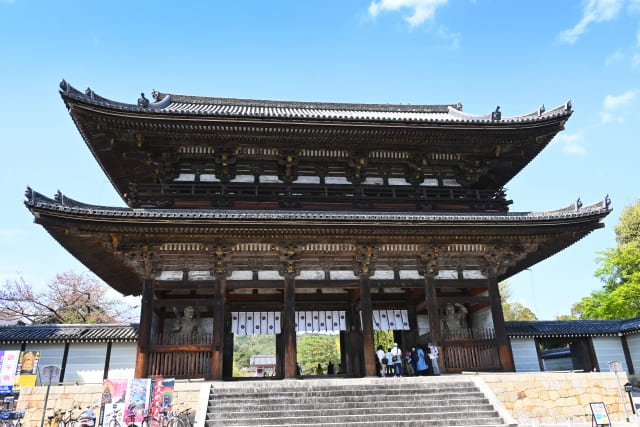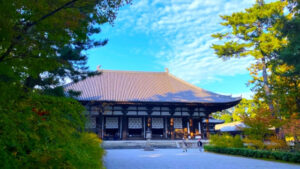Embracing the History
Ninnaji Temple is one of the cherished gems in Kyoto’s culturally rich landscape. This imperial temple is an embodiment of Heian Period architecture, which has been the country’s capital for more than a thousand years. The temple is a part of the Historic Monuments of Ancient Kyoto, a UNESCO World Heritage site. It is renowned for its beautiful cherry blossom displays in spring and features a sprawling traditional Japanese garden, representing a perfect blend of natural beauty and historical significance.
Architectural Splendour

Ninnaji Temple’s main hall, Kon-do, offers an insight into the refined architectural style of the Heian period. The five-story pagoda stands tall within the temple grounds, casting a towering shadow over the other structures and adding an element of magnificence to the landscape. Omuro cherry trees, which bloom a week later than most other cherry trees in Kyoto, add to the picturesque scenery, especially during the peak bloom season.
Treasures within the Temple Grounds
The temple complex is home to several cultural treasures including the National Treasure Golden Hall, the National Treasure Five Storied Pagoda, and the Important Cultural Property Nio-mon Gate. Art and history enthusiasts can spend hours exploring these structures, examining their intricate designs and learning about their historical significance.
Practical Information and Tips for a Seamless Visit
– Access by Train
From Kyoto Station, take the JR Sagano Line to Hanazono Station. The temple is a 15-minute walk from there. The train ride costs around 240 JPY and takes approximately 20 minutes.
– Access by Bus
Kyoto city buses number 26, 58, and 97 all stop near Ninnaji. From Kyoto Station, it costs 230 JPY and takes about 40 minutes.
Please note that the temple grounds are open to the public free of charge, but there’s an entrance fee of 500 JPY to access the Goten, the former residence of the head priest, which features a beautiful Japanese style garden.
It’s best to visit during the cherry blossom season, from late March to late April. However, Ninnaji Temple exudes charm and tranquillity throughout the year. Make sure to check the temple’s official website for any changes in operation hours due to seasonal or special events.
Plan your visit to Ninnaji Temple and immerse yourself in the rich history, stunning architecture, and serene ambiance that it offers. This captivating attraction in Kyoto promises a memorable experience that resonates with the spirit of traditional Japan.









